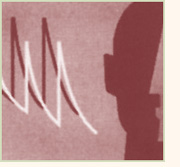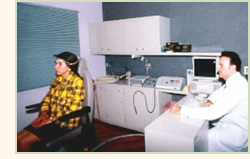 That is vertigo. All Specialties To Recover Your Hearing And Balance Health!
That is vertigo. All Specialties To Recover Your Hearing And Balance Health!
CNG Computerized Nystagmus
The patient suffering from vertigo is one who is not able to react on his own, that is, if he has vertigo and is in front of a cliff, he can simply fall; Unlike those who only suffer from dizziness and can react to this situation.
In addition we have the various forms of fears, phobias, states of anguish, anxieties, depressions, etc., which usually differentiate well from the vertiginous state.
Vertigo causes. Another characteristic of vertigo is that it can be accompanied by the so-called neurovegetative manifestations, such as sweating nausea or vomiting, tachycardias, etc.
Once the medical chart is established, we can begin the relevant exploration to establish the correct diagnosis and differential diagnoses.
Nystagmus or ocular movements have been studied in many ways for many years and these studies have been started with electronystagmography. But the latest research of this nystagmographic REGISTRY has been added computer support and ocular mobility has been videotaped.
Vertigo treatment. The components of computerized electronystagmography are:
- Contact electrodes or infrared camera
- Glasses of support
- Device to cover the other eye (according to type of examination)
- Screen or monitor, where the image (point or points or lines) in motion is projected
- Computer with printer
- Chair where the patient sits and makes the pendular and rotating movements.
- There may be other accessories but these described are basic and fundamental.
Exploration systematics
Once the patient has the goggles in place and the eye is focused, we must carry out the corresponding calibration and then the various tests of the examination are started.
We look for spontaneous nystagmus.
We begin the movements in balcony, these can be horizontal and vertical.
We have the speed of the stimulus, latency, amplitude and sense present.
The normality or not will depend on whether there is pathology or not in the CNS.
We continue with the slow tracking movements, both horizontal and vertical.
These tests are included within the study of the oculomotor system, and are several tests of follow-up of voluntary visual stimuli.
The speed of the stimulus, the latency, and the amplitude of the stimulus are also present, as in the movements in balances.
Optokinetic examinations serve to observe involuntary responses of the occipital cortex.
The tests we call the study of positional or particular nystagmus may be broad and more complex, since we can perform many eye movements, of the head, of the cervical trunk, and so on. In reality they are nystagmic provocations.
Caloric tests are considered basic, are the ones that can provide more specific data about the origin of vertigo.
Vertigo disease and treatment.Basically the caloric tests must comply with an already systematized regulation that is the following:
The patient is in supine position with the head in flexion about 30 degrees so that the horizontal semicircular duct is completely horizontal and with eyes closed, one of them, through the infrared camera and the other, with the accessory.
The stimulation is first performed in the right ear by cold water at 30 degrees and during a 30 second irrigation time, we then observe the REGISTRY, ie the responses to the stimulated stimulus, and the duration of the record is a minimum of 250 seconds.
The next stimulation is in the left ear and we waited about 5 minutes to perform it, simply to let the labyrinth rest and the mechanics we follow are identical.
The following stimulations, also leaving a rest between them of about 5 minutes, in the right ear with hot water (44 degrees Celsius) and later in the left ear.
There are physiological forms to evaluate the nystagmus as the stimulation in the torsion chair and non-physiological as is the caloric irrigation through computerized electronystagmography.
Concert Your Appointment! We Are Ready To Meet You! Do It Now!



